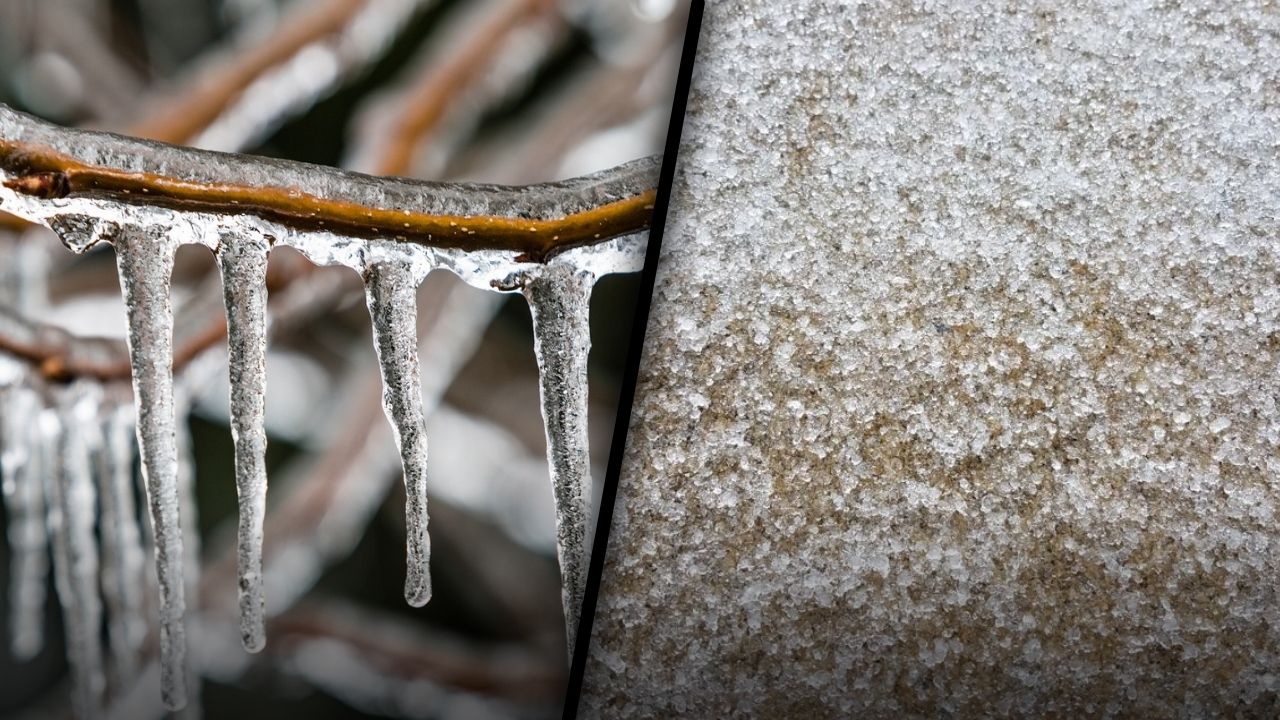A freezing rain or sleet is one of the most dreaded winter weather conditions. The headaches have complicated numerous commutes, road trips, and parking lot walks. They can also be hazardous on streets and walkways in addition to being inconvenient. The two nuisances are different, despite being both nuisances.
Freezing Rain and Sleet Similarities
Liquid raindrops fall into a layer of freezing air near the ground when they fall from well above. Sleet and freezing rain are the result. The outcome depends on the atmospheric conditions. Which type of precipitation forms depends on the thickness of the freezing air layer.
Freezing Rain and Sleet Differences
When there is too much warmth in the atmosphere, freezing rain can occur. During freezing rain, raindrops cannot freeze because the layer of freezing air is too thin. At or below freezing temperatures, raindrops freeze when they contact the ground. As a result of its ability to go unseen by drivers, it is often referred to as “black ice” on roads. In addition to trees, cars and power lines, it can also form on other surfaces.
Sleet occurs when freezing air overlies a surface layer of warmer air. Before they reach the ground, raindrops freeze. When it comes into contact with the ground, sleet bounces rather than coating it. The accumulation of sleet is similar to that of snow.
So Which is Worse?
While sleet can be annoying, freezing rain is considered to be more dangerous. In addition to coating surfaces, freezing rain also leaves behind ice. A tree covered in ice may look beautiful, but it’s also extremely dangerous. Tree branches and power lines are often brought down by the weight. There are 500 pounds of extra weight added to power lines by just accumulating 1/2 inch of snow.
There is also something sneaky about freezing rain. The treachery of this precipitation can be overlooked at first because it falls as rain. People don’t often realize they are in a hazard until they become distracted while driving or fall.
Sleet is easier to clean up than freezing rain. The snow cannot be plowed and pushed aside like sleet.
Despite the fact that 0.25 inches of freezing rain is nearly 21 times as much ice and requires nearly 21 times as much deicer to melt, ice created by freezing rain at a depth of 0.012 inches is just as slick as ice created by freezing rain at a depth of 0.25 inches or more. As well, thin ice may appear wet or invisible on many surfaces, which can make it more dangerous.
Minimizing the Effects of Freezing Rain and Sleet
Weather is something we cannot control, but we can minimize its effects. Prepare for freezing rain and sleet when the weather forecast calls for them. Anti-icer liquid such as salt brine should be applied to sidewalks, parking lots, steps and roads before they are used. By lowering the freezing point of water, salt brine prevents ice from sticking to surfaces. Reapply as necessary during a storm. It may be necessary to use a deicer after the storm to prevent refreezing.





